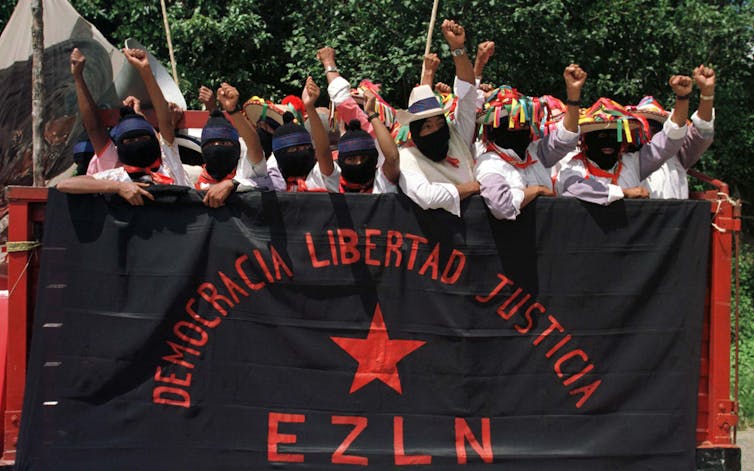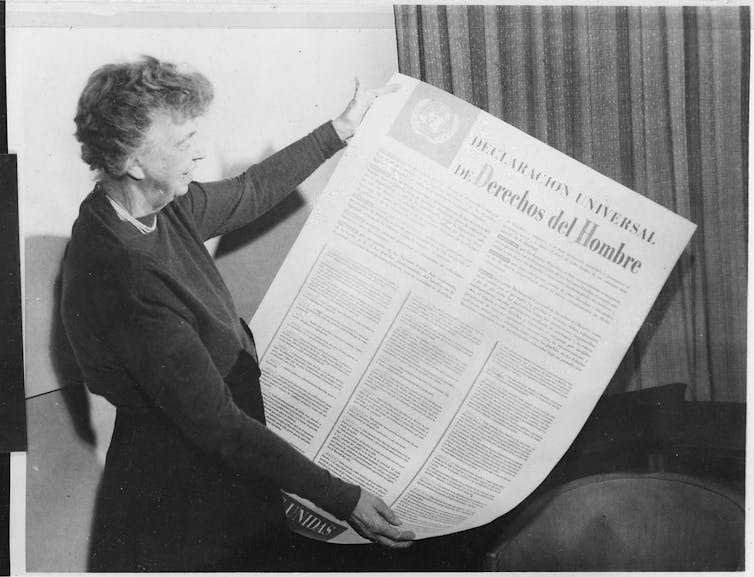The international community began creating a framework for promoting and protecting human rights 70 years ago. It’s efforts included the Universal Declaration of Human Rights, and declarations or binding treaties specific to both Europe and the Americas.
In principle, this international human rights regime and the intense global activism around it should have had a positive and significant effect on the levels of respect for human rights around the world. Sadly, that hasn’t been the case.
The case of Mexico
The difference between a commitment to human rights and practical compliance is evident in the case of Mexico. Since the early 1990s, the human rights situation in the country has been closely scrutinised from abroad.
In 1994, the human rights situation in the country began to deteriorate in the context of the government’s response to the indigenous rebellion of the Ejército Zapatista de Liberación Nacional (EZLN) in the southern state of Chiapas. The rebellion was characterised by the militarisation of indigenous territory, forced displacement and severe violations of human rights. Among the most significant was the execution of 45 civilians (mostly women and children) in the Acteal massacre, perpetrated by a paramilitary group in the winter of 1997.

Ever since, human rights organs and regional bodies have produced many critical reports on the human rights situation in Mexico. And they have made more than 2,000 concrete recommendations about how to address it.
The Inter-American Commission on Human Rights has decided against Mexico in many individual cases and has issued two reports dealing especially with the country. The Inter-American Court of Human Rights has adopted seven condemnatory rulings.
Along with other expert groups, the Interdisciplinary Group of Independent Experts appointed by the Inter-American Commission on Human Rights investigated the disappearance of 43 students from Ayotzinapa teacher training college in Guerrero state in 2014. It found the government had not performed due diligence in its handling of the case.
Amnesty International, Human Rights Watch and the Washington Office on Latin America, among others, have persistently exerted pressure through campaigns, letters, and press releases. Then there are the many highly critical reports on rights violations from police torture to enforced disappearances and extrajudicial killings. Amnesty International has reported that there were more than 2,400 torture complaints in the country in 2014, but no data to indicate that anyone was charged.
Despite the adoption of binding international legal commitments (Mexico has ratified all international human rights treaties) and enduring international pressure, the country has not progressed in its compliance with human rights norms.
The compliance gap
Why has this happened? Since the 1990s, international relations scholars have paid close attention to the influence of international norms and transnational activism on the human rights practices of individual countries.
Their basic argument used to be that through the effective distribution of reliable (and often shocking) information about human rights violations, advocates could persuade rights-violating governments to change their behaviour.
But as research has accumulated and evolved, we have come to a different conclusion. While transnational activism has had an influence on the adoption of commitments to human rights by all kinds of governments, the levels of compliance have remained mostly unchanged.
The gap between what nations sign up to with regard to human rights, and what they actually do in practice, is called the “compliance gap”.

Researchers have found that compliance with international human rights norms does not depend on the ratification of treaties, but on domestic institutional and social factors. These include regime type, the independence of the judiciary and the strength of civil society.
So now, we are interested in the desired but difficult transition from commitment to compliance, and on the conditions that might make this more likely.
What makes a difference?
Mexico is a highly globalised country, with aspirations of being part of the club of modern, democratic states.
It is a transitioning democracy with highly active civil society groups that have been mobilising and litigating in favour of human rights for a long time. All of these are conditions associated with a higher likelihood of compliance with international norms.
What, then, is causing the gap? Researchers are now exploring whether some domestic factors – including poor institutional capacities, such as insufficient, poorly trained and under-resourced police forces, criminal investigators, prosecutors or judges – have “blocked” the effects of otherwise positive human rights influences and conditions.
Another reason might be that international commitments and pressure have not worked the way they should, and have failed to generate the necessary will to change behaviour.
I am working on this precise area of research right now, and the results remain to be seen. But the most likely answer lies in the combination of both factors.
Mexican authorities have not tried very hard to alter the patterns that result in the systematic violation of human rights, and when they have, they’ve lacked the means necessary to achieve significant change.

